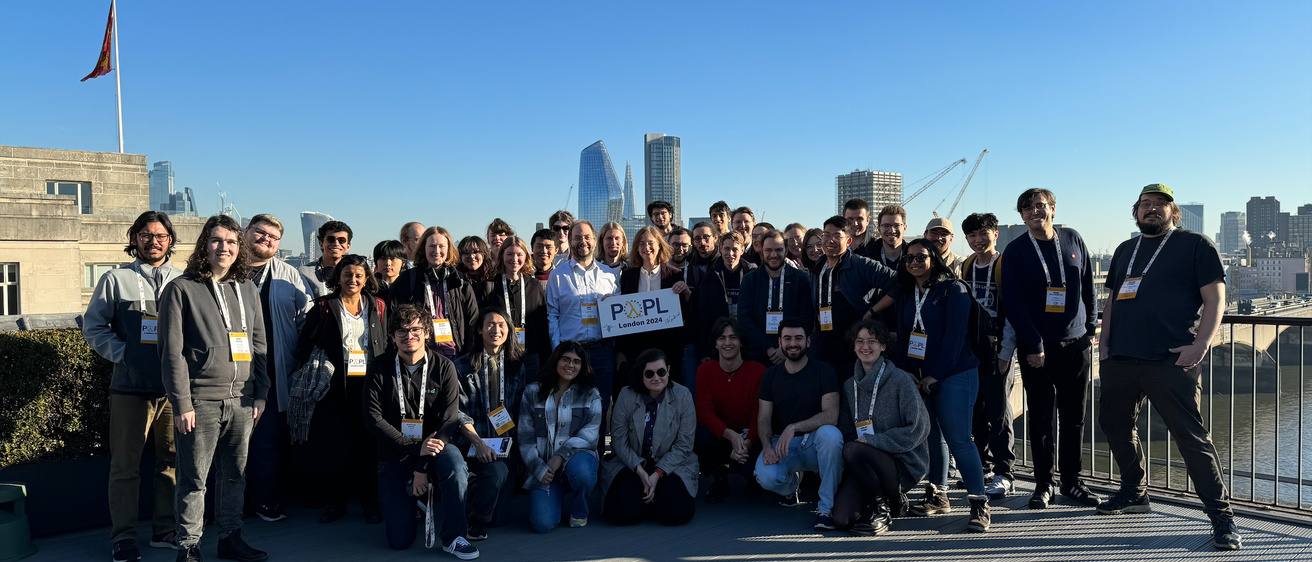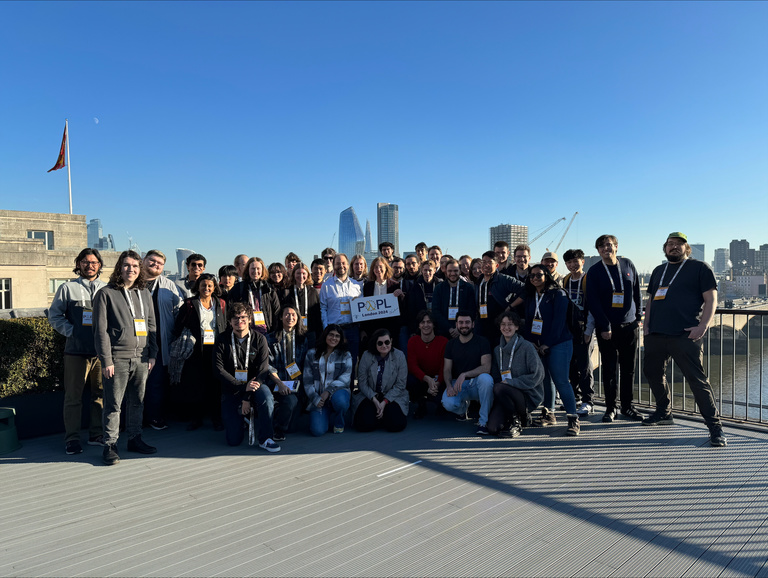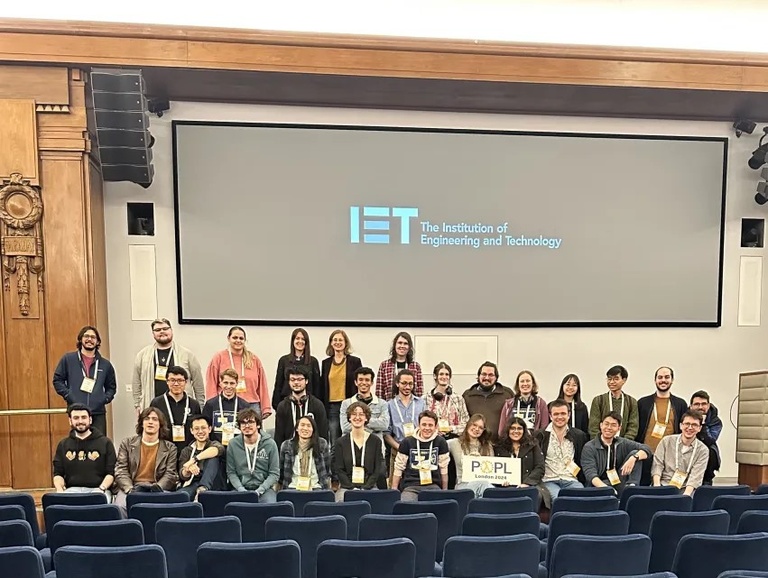
Apoorv Ingle is a graduate student pursuing a Ph.D. in Computer Science at the University of Iowa. Apoorv not only attends conferences, but he also helps behind the scenes as a video chair. Alongside a team of other students, an organizing committee, and several other volunteers, Apoorv works to make sure that those who attend conferences — either in-person or virtually — have all the technological support they need. In this Q&A, Apoorv talks about his experience volunteering as a video chair at the 51st ACM SIGLAN Symposium on Principles of Programming Languages (POPL 2024) and shares insight into the upcoming idea of holding hybrid conferences.
What are your responsibilities as video chair? How does this role contribute to the overall organization and function of conferences?
During the pandemic, there was no way for you to go and attend conferences — everything was online. Although travel is generally safe now, there’s an ongoing problem for international researchers to get a visa and funding to travel to different places. To solve this problem, we tried to find a way to live stream and enable remote participants to join in on a call and remotely present if they could not attend in person.
We have specialized laptops and hardware that captures the audio and the slides of the presenter, and the video from the camera pointed at the presenter. The laptop then mixes this media together to send the production stream to a broadcasting software platform, like YouTube.
When a person is physically present at the conference venue, it’s a fairly straightforward task. When we have a person who is remote, they use an online platform, like Zoom or Discord. We project remote presenters on an in-room screen alongside their slides. It is a very simple and cost-effective setup.
We have a group of about 50 volunteers who help manage all the talks during the conference. As a video chair, my job to help build and polish the technological infrastructure and train the volunteers to stream and record the talks. I also have to coordinate with other members of the organizing committee to make sure every attendee has an optimal experience. Most of my work is done before the conference. During the conference, my work is largely focused on addressing technological issues and designing strategies on how to avoid having them in the future.
The whole point of a conference is that you, as a researcher, have a cool piece of work, and you want to share it with other people. My responsibility is to make this experience better for everyone, the presenters and attendees alike, no matter if they are in-person or remote.
How many years have you served as a video chair for POPL?
This was my third time helping at POPL. The first time was in Philadelphia (POPL’22), the second one was in Boston last year (POPL’23), and this year it was in London. Previously, there was very little financial support. We were trying out different experiments, in terms of the technological infrastructure. Another task was to convince people that what we are trying to do is important for the research community.
Our persistence has been paying off. Three years ago, we had two people, but we have since grown to be a team of about eight. We also have more financial support to buy better hardware equipment.
“It’s exciting. It’s especially rewarding when people who cannot attend get a chance to interact with people who are there in person.” POPL Video Chair Apoorv Ingle
How did you become a video chair?
I just replied to a cold email that was asking for volunteers to help organize SPLASH 2021. I am not the first person to be a video chair — there were a couple other students who had been doing it for a few years and had to graduate and could no longer fill the role.
I would really like to thank my advisor, Garrett Morris, for encouraging me to reply to that email. I appreciate his support to let me explore these things which are not directly related to my research but are in some sense very important to become a good research community member.
After volunteering at SPLASH’21, where I closely followed the video chair to get an idea of how conference organizing works, I took the initiative of being a video chair at POPL 2022.
What challenges, if any, do you encounter in this position?
Exclusively online or in-person conferences are simple to handle. It is this hybrid mixture of online and in-person which makes overall organizing challenging. SIGPLAN conferences usually run for a whole week, and there are multiple parallel tracks. At POPL’24 we had a maximum of seven parallel tracks in one day. For comparison, on average there are usually about three to five parallel tracks. Managing two to four parallel tracks is okay, because if something goes wrong, one person can fix the issue. But if there are seven parallel tracks, with three of them having issues, then it gets more difficult. We want to make sure that we always stick to the conference schedule, so things are time critical. The key challenge we have right now is to scale out and make the technological infrastructure more reliable.
Last year was the first time that we got to record all the talks throughout the conference. Previously, because of resources constraints, we would just aim to stream and record two or three events but now we are trying to record all events.
The whole effort from our side is to build a common video recording and streaming infrastructure across all SIGPLAN conferences. I usually try to attend two conferences— ICFP and POPL — every year, because that is in my research area of interest. Now that we have more people, they handle PLDI and SPLASH. We ensure that all the video chairs, across conferences talk to each other and learn how to make the system better for future conferences.
How is your conference experience similar and/or different from those who are also at POPL?
I play a dual role at the conference. Even though I'm a video chair, I would also like to attend the talks and meet people. Sometimes it gets difficult to attend the talks if there are too many issues that need an urgent resolution. It is under my purview as a video chair to make sure that the talks are running smoothly.
There is a balance of attending the conference itself versus helping. In my opinion, most of the problems can be mitigated through meticulous planning, which comes with experience. Knowing where things can go wrong gives you a chance to proactively avoid issues during the conference.
What do you enjoy most about being a video chair?
The most enjoyable thing about this role is that people really appreciate the contribution. It is rewarding to see that what you’re doing is affecting people in a good way. It comes up in random conversations, where someone says “Oh, I saw this talk on YouTube, and that’s what got me into this area”, and then you go check that talk, and realize that you were one of the people who enabled this.
Based on your experience, what advice do you have for those who have an interest in being a part of conference leadership or are considering getting involved in service?
They should go for it, there is no such thing as too many helpers! If you find a research community of your interest, you should not hold back. Usually, in my experience, communities always need people to help organize these events. It is also a very good way to get visibility in the community.
All recorded talks from POPL 2024 are available on ACM SIGPLAN’s YouTube page at youtube.com/@acmsigplan


